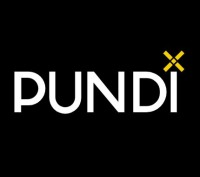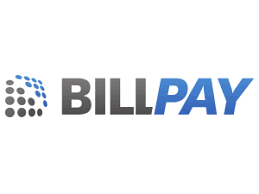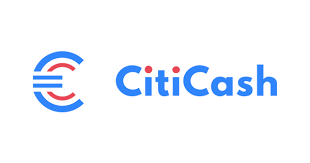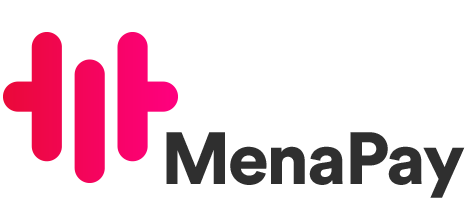Cryptocurrency has many advantages that make it a better monetary system than has ever existed before. But all their benefits don’t matter if cryptocurrencies themselves aren’t actually being put to use in the real world. I
n order for cryptocurrencies to realize their potential, there has to be a certain amount of infrastructure making it possible for people to make them a part of their daily lives.
As a method of payment between 2 individual people, transferring crypto to each other is as easy as scanning a QR code.
For a business, government, or other institution, there are many more layers of the process to consider. A payment for a good or service at a place of business has to be recorded in their existing accounting systems, they may need to have ways for multiple employees to handle payments simultaneously, and there may be government regulations that affect the process.
For corporations or other institutions to participate in the growing cryptocurrency economy, they will need systems that help make cryptocurrency transactions compliant with existing protocols. Many companies are stepping up to try and help build those systems.
Here we list 6 notable efforts to make it easier to use crypto for everyday transactions.
6 Cryptocurrencies and Platforms Made for Everyday Use
Metal Pay

Metal Pay functions only in the United States, where they are effectively a bank. You can open a fiat account with them, one that is accredited and regulated like any other bank.
Where they diverge from a traditional bank, though, is in their associated cryptocurrency token, MTL.
When you make regular purchases using the soon-to-be released Metal Pay card or app, you earn MTL pay tokens through a system called Proof of Processed Payment, or PoPP, or also just “pop.” The idea is to create and distribute new coins to people who use their system, instead of the usual system most other cryptocurrencies employ of rewarding miners.
With Metal Pay, you are reimbursed roughly 5-10% of your purchase amount in equivalent MTL (although there are a few layers of math on top of that which regulate maximum daily payouts, so the actual amount won’t be a straight percentage). The goal is to keep distribution balanced between rewarding those who use the system while not devaluing the currency by releasing too many tokens too quickly.
In this system, MTL is put in the hands of users who are just spending regular fiat money, almost like a loyalty point system offered by many retailers and credit cards. Once users start accumulating MTL, the next logical question one can assume they’ll ask is, what to do with it?
Metal Pay hopes that the time will come when MTL will be as much a currency as anything else, and so people will use their MTL to buy whatever they want. However, while it’s intended that MTL will be used purely as a day-to-day spending currency, it’s an ERC-20 token, so you can easily exchange it with currencies until the day comes when you can spend it directly.
Pundi X

Pundi X is a payment processor for merchants that makes it as easy as possible to receive cryptocurrencies.
So far, they have launched a device that sits on top of a counter — presumably beside a cash register — where users can interface with the Pundi X platform using QR codes, RFID chips, or cards. In the future, they plan to have self-checkout machines and other tools to help facilitate consumer retail purchasing.
They also provide a software system to help organize the payment information that comes in as users spend cryptocurrency at stores using the Pundi X system.
Pundi X covers all aspects of the merchant side of a retail sale, so that merchants can essentially drop it into place and be ready to accept just about any major cryptocurrency. They also provide all the functionality to receive non-crypto payments like cash and credit, so that merchants don’t have to deal with 2 parallel systems, but can have one integrated, all encompassing system for sales and services to receive crypto.
Interestingly, Pundi X is developed in Indonesia, a country that currently does not allow cryptocurrency to be used as a currency. Pundi X nonetheless have distributed their system among thousands of retailers there, which means that they have stress tested their regular fiat payment systems.
A retailer using their platform can be confident that their regular cash and credit business will be handled correctly, so that when it comes time to add in crypto, nothing will be sacrificed.
BillPay

BillPay has a novel approach to getting cryptocurrency into your life. BillPay wants you to ship them your coins — as in your literal metal coins you use as spare change — and they will convert them into crypto. You can then use crypto amounts to pay bills.
BillPay makes their money by charging 1.99% on transactions, and you also have to factor in the amount it costs to ship them your coins. They only take US coins and operate within the United States, so there’s no international shipping costs, but still, it can’t be too cheap to ship metal around within the country.
Assuming you get your coins to them for a price you can live with and their service fee is acceptable, then a question that comes up is: how many bills can be fully covered by the amount of spare change one has lying around? They say they can handle payments of up to US$9,000, which is a lot of spare change.
Probably the most appealing aspect of BillPay is the prospect of taking spare coinage and converting it into crypto. Many people make a savings habit out of siphoning spare change from their wallet into a separate fund that can be used to buy fun or useful things at the end of the year.
Having crypto as one option for what to do with those coins that get set aside might be more appealing than covering the phone bill.
Living Room of Satoshi

Living Room of Satoshi is a bill payment system similar to BillPay, but it is only in Australia, which is unfortunate because after many years in the game, Living Room of Satoshi has built a reputation as being solidly reliable.
Living Room of Satoshi started out with just Bitcoin, back when Bitcoin was essentially the only coin available but they’ve kept up with the evolving crypto world, and now accept roughly a dozen of the most common cryptocurrencies.
Living Room of Satoshi does not charge fees. Instead, they make their profits entirely on the spread of exchange rate between crypto and Australian dollars. Which means that when you pay your bills, your money won’t go quite as far as if you paid directly in fiat. But then again, all services charge for convenience, so this isn’t really anything that should cause concern.
You can also pay your rent and other substantial obligations with Living Room of Satoshi, which really gets close to realizing a life where you forsake fiat cash for crypto entirely.
CitiCash

CitiCash is a cryptocurrency that aspires to be used every day like any fiat currency. To get there, instead of offering incentives or services, they have put their focus almost entirely into ease of use.
They’ve created the CitiCash wallet with simplicity and intuitiveness as the primary drivers behind all design decisions, and you would be hard pressed to find a wallet that does a better job at providing the essential information in a clear, easy-to-access way. They also have plans to create debit cards, which will facilitate payments in a manner already very familiar to a large part of the world.
The CitiCash wallet is strictly for storing their token, CCH, so the extent to which you’ll be able to use it in your daily life will depend entirely on how far they can get merchants and people to take it on. In one sense, this could be a challenge, as there are already many crypto tokens vying to be everyone’s money for daily use.
On the other hand, there are many retail systems, such as Pundi X, listed above, which make it possible for merchants to accept any and all cryptocurrencies, automatically changing the received crypto into whatever token the merchant prefers.
If such systems become ubiquitous, then there is less need for consumers to all buy into the same currency. All things being equal, they may very well opt to go with the currency that’s easiest to use, and that will be defined in a big way by the wallet.
To get the wallet and learn more about the CitiCash token sale, check out their website.
MenaPay

MenaPay is another project trying to make cryptocurrency a reality in day-to-day life. They offer both a wallet for consumers and payment processing software for merchants to get both sides of the retail process on board with using crypto.
They’re based largely in the Middle East, and, for those who might want it because of religious concerns, they offer a “100% Islamic” service.
While this gives MenaPay an advantage in their home region when dealing with banks and local regulations that may have different constraints than other parts of the world, for people in other regions who don’t adhere to Islamic practices, the fundamentals of buying and selling with MenaPay are as standard as any other cryptocurrency.
As you investigate MenaPay, you will notice a lot of the same features and promises offered by many other cryptocurrencies, such as ease of use, lower fees, faster transactions, and so on.
However, there is one standout feature that makes Menapay very different from the rest.
They are pegging the value of their token, MenaCash to the US dollar, so that it is not subject to the same price fluctuations as other cryptocurrencies that rely on market forces to establish their value.
This may raise some eyebrows, especially when Tether, the digital currency pegged to the US dollar that created as a way to make purchasing cryptocurrency easier, has become notorious for a lack of auditing that proves they actually have the funds to back their claims. Any currency basing their value on a peg to a fiat currency is going to have to contend with the legacy of perception created by Tether.
The difference between MenaPay and Tether, though, seems to be that Tether exploded in terms of issuance, raising suspicions about whether the amount needed to back the amount in circulation could have been acquired as fast as it was. MenaPay, however, is working with established banks, and has backers in the region with substantial funds to offer.
And maybe most importantly, the amount they need to hold in trust is substantially smaller than what Tether would require. The aims of MenaPay are considerably more feasible.
Nonetheless, unlike most cryptocurrencies that aspire to be as trustless as possible, MenaPay will require some faith that the funds backing it exist. Once that faith is established, then Menapay could make purchasing in regions where banking can be complicated become a lot smoother.

